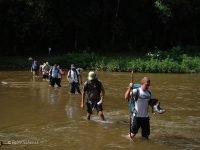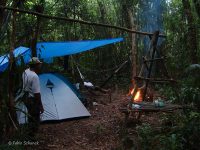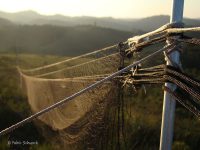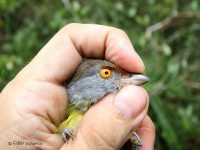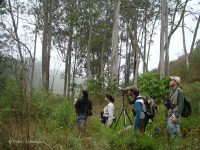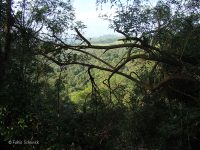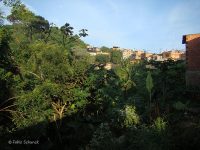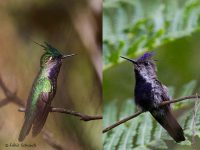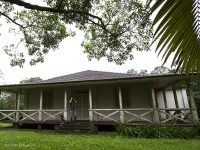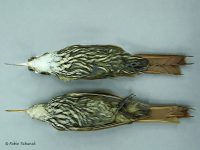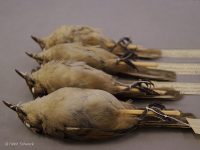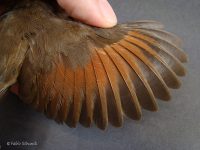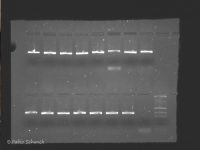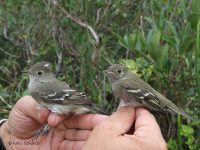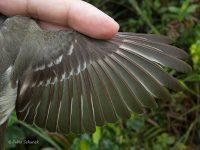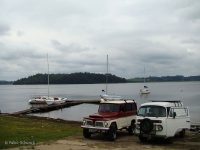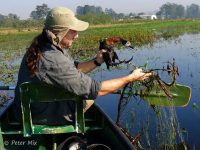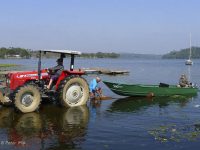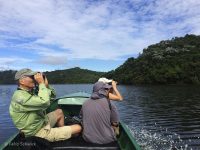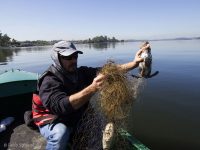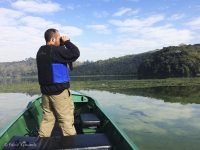LANGUAGES: ENGLISH - PORTUGUESE | CONTATO
Projects
Community structure, altitudinal gradientes, biogeography, taxonomy, and monitoring of aquatic and migratory birds
My research focuses mainly on questions associated with avian community composition along altitudinal gradientes in the Serra do Mar of São Paulo, biogeography, taxonomy, and monitoring of aquatic and miratory birds. I employ banding, bioacoustics, scientific museum-oriented collecting, and photography as important tools in my ongoing field work.
Community structure, altitudinal gradients and banding
Composition, species richness, and altitudinal movements of birds of the Serra do Mar of São Paulo
 This Project was initiated in 2003 and continues today as the doctoral thesis of the researcher Fabio Schunck, through the Zoology Department of the University of São Paulo. The study is being carried out at the “Curucutu Nucleus” which is one of ten nuclei of the Serra do Mar State Park (the largest conservation unit in São Paulo state), located in the southern part of the municipality of São Paulo. The main objective of the study is to gather data on the species richness and composition of the avifauna in the diferente habitats alonga n altitudinal gradiente between 15 and 800 masl, and to investigate altitudinal movements along that gradiente, with emphasis on species endemic to the Atlantic Forest, migratory species, and those threatened with extinction. The systematic field study phase was carried out between 2007 and 2011 (315 days of field sampling) and involved the simultaneous use of mist-nets, the banding of 4,100 individual birds, and auditory censos points, which registered a total of 372 species of birds. Inventory and monitoring of certain species of birds is continuing currently.
This Project was initiated in 2003 and continues today as the doctoral thesis of the researcher Fabio Schunck, through the Zoology Department of the University of São Paulo. The study is being carried out at the “Curucutu Nucleus” which is one of ten nuclei of the Serra do Mar State Park (the largest conservation unit in São Paulo state), located in the southern part of the municipality of São Paulo. The main objective of the study is to gather data on the species richness and composition of the avifauna in the diferente habitats alonga n altitudinal gradiente between 15 and 800 masl, and to investigate altitudinal movements along that gradiente, with emphasis on species endemic to the Atlantic Forest, migratory species, and those threatened with extinction. The systematic field study phase was carried out between 2007 and 2011 (315 days of field sampling) and involved the simultaneous use of mist-nets, the banding of 4,100 individual birds, and auditory censos points, which registered a total of 372 species of birds. Inventory and monitoring of certain species of birds is continuing currently.
Partner: Fundação O Boticário de Proteção A Natureza (between 2007, 2008 and 2009), Fundação Florestal de São Paulo (COTEC), CEMAVE/ICMBio, Museu de Zoologia da USP, Programa Birders´ Exchange (American Birding Association) and Laboratório de Genética e Evolução Molecular de Aves – LGEMA (IB/USP).
- Heading into the field
- Camping
- Mist-nets
- Rufous-browed Peppershrike
Forest birds of the Guarapiranga hydrographic basin, São Paulo

This Project began in 2000, during the earliest stages of graduation in the field of biology of the researcher Fabio Schunck, studying the birds of “Eucalyptus Island”, in Guarapiranga Reservoir (southern São Paulo city), carrying forward with ornithological inventories in different areas of that hydrographic basin, including, among others, Gurarpiranga Ecological Park, the Embu-Guaçu River Várzea State Park, and the Jaceguava region. The main objective is characterization of the avifauna of forest remnants, with a focus on investigation of potential extinctions and interferences resulting from forest fragmentation on avian populations in the last remaining natural habitats in metropolitan São Paulo, with the hope of contributing to their conservation. Inventory and monitoring of certain species of birds is continuing currently. The project involves praticipation of several collaborators.
Partner: Fundação Florestal de São Paulo (Reserve managers), Programa Birders´ Exchange (American Birding Association) and Marina Sailing Center.
- Forest fragment
- Field study
- Forest fragment
- Forest fragment
Biogeography
Birds of the Serra do Mar of São Paulo

Source: Joly et al. 2012
This Project had its beginnings in 2007 with the objective of organization of contemporary and historical data about the birds of the Serra do Mar of São Paulo, with emphasis on latidudinal and altitudinal distributional limits, contact zones, and occurrence patterns, especially of endemic and migratory taxa, and of those threatened with extinction. The database is based on information available through scientific collections in natural history museums, online databases, specialized literature, unpublished reports, and exploratory field expeditions.
Partner: Fundação Florestal de São Paulo (COTEC and managers of the PESM), Museu de Zoologia da USP and Programa Birders´ Exchange (American Birding Association).
- Historical Literature
-
Plovercrest
(Stephanoxis lalandi/loddigesii)
- Fieldwork
-
Woodcreepers
(Lepidocolaptes squamatus/falcinellus)
Taxonomy
Taxonomic revision of the Phacellodomus rufifrons (Rufous-fronted Thornbird) complex

Source: Handbook of the birds of the world / Drawning: Tim Worfolk
This species complex (family Furnariidae), comprising six subspecies, occurs over much of Brazil outside of Amazonia and the far south, and in various other South American countries. The Project was initiated in 2006, and field expeditions for collecting of samples were conducted in various regions of Brazil up to 2014. The principal aim has been evaluation of the validity and geographic limits of the multiple subspecies attributed to the P. rufifrons species-group. The work is grounded in analyses of phenotypic (morphometric , vocalizations) and genetic profiles, and involves collaboration of several research colleagues.
Partner: Museu de Zoologia da USP-MZUSP
- Museum specimens
- Wing morphology
- Wing morphology
- Molecular analysis
Monitoring of aquatic and migratory birds
Elaenia of the Serra do Mar of São Paulo

This Project was begun in 2009 and is being conducted in the “Curutucu Nucleus” of the Serra do Mar State Park, located in the southern part of the municipality of São Paulo. Collection of data on the long-distance migration of White-crested Elaenias (Elaenia chilensis), which breed in the “Southern Cone” and migrate through eastern Brazil to the northeast, where most of the population apparently winters, is the main focus of the study. The Curucutu is optimally situated in the migration pathway of E. chilensis, and the study also tracks the more geographically restricted migratory/seasonal movements of Elaenia mesoleuca (Olivaceous Elaenia) and Elaenia obscura (Highland Elaenia) through these areas. The birds are captured in mist-nets and banded (“ringed”) with CEMAVE/ICMbio metal bands, and in the process, various biometrical data are recorded. The project involves collaboration of various research colleagues.
Partner: Fundação O Boticário de Proteção A Natureza (2009), Fundação Florestal de São Paulo (COTEC), CEMAVE/ICMBio, Programa Birders´ Exchange (American Birding Association) and Laboratório de Genética e Evolução Molecular de Aves – LGEMA (IB/USP).
- Bird banding base
- Mist-nets
- Elaenias
- Wing detail
Monitoring of Nearctic shorebirds and waterfowl migrating through the São Paulo metropolitan district
 This Project got off the ground in 2000 with the first systematic ornithological studies of birds in the Guarapiranga Reservoir area in southern São Paulo city. By 2006, two specific áreas were identified as key observation points to be monitored monthly: the Tietê Ecological Park (northern São Paulo city) and the Várzea do rio Embu-Mirim, in the hydrographic basin of the Guarapiranga region. The principal focus of the study is the collection of qualitative and quantitative data surrounding the occurrence of of species of Scolopacidae and Charadriidae (shorebirds) and monitoring of some other aquatic species apparently performing regional movements, such as Himantopus melanurus (White-backed Stilt), Platalea ajaja (Roseate Spoonbill), Rynchops niger (Black Skimmer), and seveal other species of ducks with the aim of identifying potential risks and threats to migratory birds that regularly use wetlands of metropolitan São Paulo, by far the largest urban area on the continent of South America. The project currently includes monthly monitoring of the Embu-Mirim region (started in 2006) and in the Guarapiranga Reservoir, with field excursions on land and employing kayaks, canoes, and outboard motors. The research involves collaboration of various colleagues.
This Project got off the ground in 2000 with the first systematic ornithological studies of birds in the Guarapiranga Reservoir area in southern São Paulo city. By 2006, two specific áreas were identified as key observation points to be monitored monthly: the Tietê Ecological Park (northern São Paulo city) and the Várzea do rio Embu-Mirim, in the hydrographic basin of the Guarapiranga region. The principal focus of the study is the collection of qualitative and quantitative data surrounding the occurrence of of species of Scolopacidae and Charadriidae (shorebirds) and monitoring of some other aquatic species apparently performing regional movements, such as Himantopus melanurus (White-backed Stilt), Platalea ajaja (Roseate Spoonbill), Rynchops niger (Black Skimmer), and seveal other species of ducks with the aim of identifying potential risks and threats to migratory birds that regularly use wetlands of metropolitan São Paulo, by far the largest urban area on the continent of South America. The project currently includes monthly monitoring of the Embu-Mirim region (started in 2006) and in the Guarapiranga Reservoir, with field excursions on land and employing kayaks, canoes, and outboard motors. The research involves collaboration of various colleagues.
Partner: Programa Birders´ Exchange (American Birding Association) and Marina Sailing Center.
- Field logistics
- Storm
- Observations
- Rescue of a White-faced Whistling-Duck
Great Grebe Project (Podicephorus major)
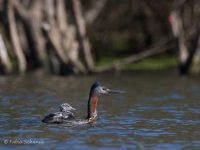
This project was started in 2009, after the first records of Podicephorus major were established at Guarapiranga Reservoir in Southern São Paulo city. Numerous field observations outings were undertaken between 2009 and 2015, employing canoes and kayaks. Beginning in 2016, monthly monitoring trips using outboard motors have been conducted, permitting censusing of a considerably greater area of potential habitat for this species. We hope to accumulate data on long-term populational stability of Great Grebe, ultimately contributing to to conservatiom of this species in the São Paulo region, and also of many other co-occurring aquatic species. The project involves collaboration of various colleagues.
Partner: Programa Birders´ Exchange (American Birding Association) and Marina Sailing Center.
- Field logistics
- Observations
- Rescue of a Pied-billed Grebe
- Observations

